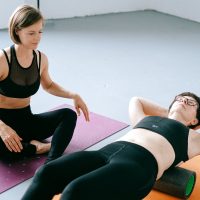In order to practice mindfulness meditation, one must be acutely aware of the present moment.
One concentrates on the sensations during mindfulness meditation without interpreting or passing judgment on them.
To create a concentrated state, those who practice mindfulness meditation use techniques like guided imagery, breathing exercises, and postures.
Meditation has a variety of advantages, including a reduction in stress, greater sleep, and increased focus.
Scroll down to learn more about the studies on mindfulness meditation, but for now, read this brief overview of the practice.
Quick guide to mindfulness meditation
Here is a quick primer on how to used mindfulness meditation.
Mindfulness meditation is like chess: the rules are relatively easy to explain, but the game itself is infinitely complex.
And, like chess, the names and techniques of mindfulness meditation are many and varied but the fundamentals are much the same:
1. Calm your body and mind
This can be accomplished by any tried-and-true method that works, including body posture, mantras, gradual muscle relaxation, and mental images.
You may choose.
As most people have some experience relaxing, even if we don’t have much opportunity, this step is rather simple.
2. Be mindful
Bit cryptic this one but it means something like this: don’t pass judgement on your thoughts, let them come and go as they will (and boy will they come and go!) but try to nudge your attention back to its primary aim, whatever that is.
Turns out this is quite difficult because we’re used to mentally travelling backwards and forwards while making judgements on everything (e.g. worrying, dreading, anticipating, regretting etc.).
The key is to notice in a detached way what’s happening but not to get involved with it.
This way of thinking often doesn’t come that naturally.
3. Pay attention to something
The sensation of the breath coming in and out is frequently the focus of meditation, although it might also be anything, such as your feet, a potato, or a stone.
We always have our breath with us, thus it’s useful.
Just try to give it your full attention, whatever it is. Bring your focus back slowly when it starts to stray, as it almost certainly will.
Be kind to yourself and stop criticizing yourself.
It’s quite challenging to focus on one item at a time; you’ll start to feel the mental strain right away.
Experts claim that with practice, this gets easier.
4. Concentrate on nothing
Most say this can’t be achieved without a lot of practice, so I’ll say no more about it here.
Master the basics first.
Explore
This is just a quick introduction but does give you enough to get started.
It’s important not to get too caught up in techniques but to remember the main goal: exercising attention by relaxing and focusing on something.
Try these things out first, see what happens, then explore further.
→ Here are some more mindfulness exercises to fit into daily life.












